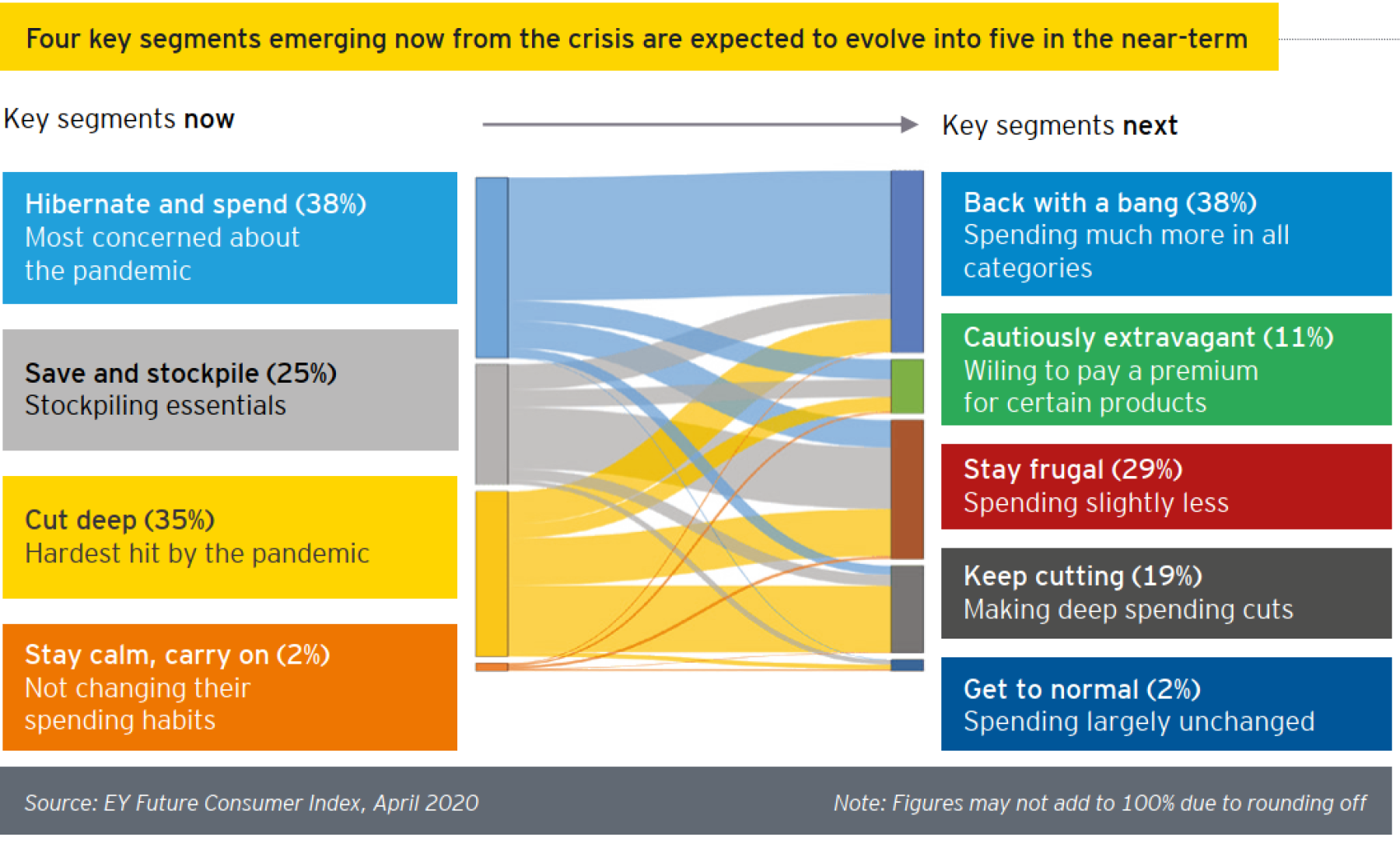- EY survey, Future Consumer Index, tracks consumer behavior and sentiment in India
- The pandemic has created four new consumer behavior segments evolving in five different ones after the crisis
India, 10 June 2020: According to EY’s latest report ‘COVID-19 and emergence of a new consumer products landscape in India’, 60% of Indian consumers believe the way they shop would change as a result of COVID-19. In the early stages of the pandemic, consumers were worried about the health of their families and meeting their basic needs. These common concerns are manifesting themselves in different ways. This is defined by four distinct consumer behavior segments, according to the EY Future Consumer Index, a survey of 1,046 Indian consumers, mostly in urban areas, covering their current behaviors, sentiment and intent.
- Hibernate and spend (38% of respondents): These consumers are concerned about the pandemic but are also best positioned to deal with it.
- Cut deep (35% of respondents): This group includes consumers who are pessimistic about the future and are currently spending less across all categories. In this group, over 40% are spending more on grocery delivery services. (out of 367 respondents)
- Save and stockpile (25% of respondents): are worried about their families, less optimistic about the future and have been stockpiling essentials, thus, 55% of them are spending more on household and hygiene products. (out of 266 respondents)
- Stay calm, carry on (2% of respondents): Relatively, a very small segment of consumers is the least impacted and are expected to resume their old shopping behaviors.
Given the anticipated changes in consumer behavior and category dynamics, the report highlights that consumer products companies would need to take quick actions to respond to the ‘Now’ phase, alter operating model to address the ‘Next’ phase and then consider strategic transformations to build a resilient organization for the ‘Beyond’ phase.
Pinakiranjan Mishra, Partner and National Leader, Consumer Products and Retail, EY India said, “Indian consumer products companies face a multitude of challenges in the ‘now’, ‘next’, and ‘beyond’ phase coupled with the radically changing consumer behavior in India. Companies must formulate strategies immediately to address the challenges in all the three phases, including permanent safety measures in offices and on shop floors, re-evaluating brand portfolio, expanding relationships with third-party e-commerce platforms, exploring shared warehousing and most importantly, anticipate and be ready to respond to newer habits that consumers will develop after living through the pandemic.”
Five new segments may emerge as consumers move beyond the pandemic
The four segments identified could morph into five very different ones as the pandemic subsides. For example, the EY Future Consumer Index currently suggests that over time, most consumers in the “Hibernate and spend” group will migrate to “Back with a bang” group as they are waiting to get back out and spend money on shopping. About 69% of the consumers (out of 401) from the “Back with a bang” group expect to be better off with finances over the next one-year. Similarly, consumers in the “Cut deep” group will either “Stay frugal” or “Keep cutting” their expenditure on all categories except groceries. Going forward, about 53% of the consumers (out of 194) from the “Keep cutting” group will give more importance to pricing once the outbreak is over. These new consumer groups, detailed in the Future Consumer Index, could emerge post-COVID-19 and be summarized as: “Back with a bang” (38%), “Stay frugal” (29%), “Keep cutting” (19%), “Cautiously extravagant” (11%) and “Get to normal” (2%).


